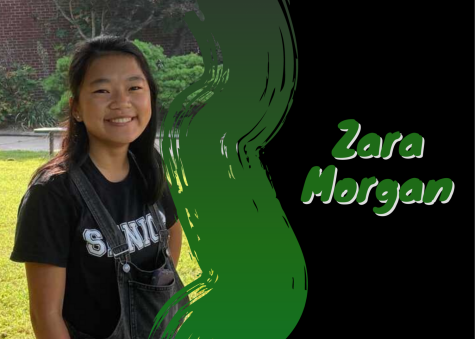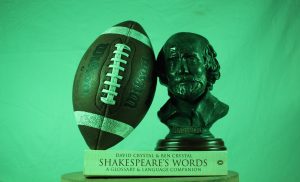Is It Time to Cancel Dr. Seuss?
Mar 2, 2021
Dr. Seuss was mainly known as an author of children’s books. But did you know that his real name was Theodor Seuss Geisal? Did you know that his children’s books have been translated in more than 15 languages? There are so many unknowns about this famous children’s author that can be fun to look up and discover. But as everyone knows, the more you look into someone’s past, the more of their depravity you see. Who was Dr. Seuss really? Was he really a good person? Is he the childhood hero or just another racist to add to a long list of them that existed during his time?
Springfield, Massachusetts was the place that Henrietta Seuss Geisal gave birth to her son, Theodor Seuss Geisal. His father, Robert Geisal, was a successful Brewmaster. Seuss was the editor of Dartmouth college’s humor magazine and he also graduated from there. Education took him all over the place. He went to Lincoln College, Oxford, and the Sorbonne for postgraduate studies. During his time at Oxford, Seuss met his first wife, Helen Palmer, and she is the one that pushed Seuss towards professional illustration.
Seuss’s most famous books are hallmarked by their uses of basic words and simple sentences. This practice was first started by the author when he was challenged to write a book using 220 new-reader vocabulary words that could help teach young kids in an entertaining way. This was done in order to help kids learn the necessary vocabulary they needed in a way that was enjoyable for them. This is how the famous “Cat in the Hat” was born. His children’s stories have reached over 200 million copies worldwide and have been translated into many different languages.
Seuss today is paraded across schools all around the country to encourage children to read. His books can be found in most American households and schools. Junior Cole Wiese says, “We read it as in passing, not like we read it religiously, but just the book we kind of liked reading, and my parents liked to read it to me when I was really young.”
“I liked him. I read [Dr. Seuss books] growing up, and I got confused about the grammar,” says junior Paris Alsup, “They formed my childhood.”
But did you know that children’s books are only the beginning of what Seuss was capable of?
Seuss wrote cartoons and writings that could’ve been found in places like “Vanity Fair” and “The Saturday Evening Post” among others. He was also known for “Flit” advertisements for Standard Oil. Despite his fame on the page, he was not a man that was recognized on the street.
In 1941, Seuss took to making cartoons that made fun of the Axis Powers of Europe for “PM” magazine. Seuss was a fierce supporter of President Roosevelt and somehow knew that it was only a matter of time before the United States entered the war.
Interestingly, Seuss’s art was not all meant for comedy. A lot of his earlier works were very dark and disturbing. Many of his works depicted racist racial stereotypes in the late 1930’s to 50’s.
For example, his first book, “And to Think That I Saw It on Mulberry Street” (1937), included a depiction of an Asian character dressed in a traditional outfit and referred to him as a “Chinaman.”
Seuss is also marked down to have written an entire minstrel show and performed it in full blackface in his college years.
“I feel like when you tell me about the black face, it might be scary. I feel like it was scary or something like that,” sophomore Angel Pantoj says. “I”ve [heard] all, like, the blackface and all the discussions you gave me, like, it sounds scary or intimidating.”
In his book, “If I Ran the Zoo” (1950), there are also some things that should be put into question. In the book, two men that are said to be from Africa. They are depicted not wearing any shirts or shoes with grass skirts while carrying an exotic animal.
Later in life, you could say that he started to regret the things of his past. Years after the initial publication of “And to Think That I Saw It on Mulberry Street”, Seuss decided to make a couple changes. He changed the skin color of the character so it was not as yellow and changed the reference of him from “Chinaman” to “a Chinese man.”
Along with changing some of his existing writings he also shifted on what he was writing about. He started writing about inclusivity. He went from writing about racial stereotypes to writing against discrimination.
“The Sneetches” (1953) was a book about creatures referred to by the namesake of the book. The Sneetches were split off into two groups: the superior Star-Belly Sneetches and the lesser Plain-Belly Sneetches. One day, a man called Sylvester McMonkey McBean came claiming he could solve the Sneetches’ problems. He offered to give the Plain-Belly Sneetches stars for a mere three dollars using a fancy machine. From one moment to the next, the Plain-Belly Sneetches now were no longer that. They had stars! Now they could fit in, right?
Once the Star-Belly Sneetches hear this, they decide they want to remove their stars. Guess who can do that as well? Our friend Mr. McBean. This cycle goes back and forth leaving unhappy Sneetches and a rich Mr. McBean. By the end of it, they have gone through the machines so many times no one knows who is who.
Mr. McBean leaves rich, not knowing the lesson he taught to the Sneetches. The Sneetches learned that whether a person has a star, or does not have a star should not matter. All Sneetches are valid.
Chuck Jones was an animator that worked alongside Seuss.
Jones says, “I don’t think you write a book like “The Sneetches” if you haven’t evolved.”
The transformation between bigot and advocate is a big one. A working theory is that Seuss stopped his discrimination after his experience in college. During Seuss’s time in college, he experienced anti-semitism. Many people in college believed that Seuss was Jewish and was heavily discriminated against. However, Seuss graduated from college in 1925 and his books with questionable things came out much later.
After this experience he went on to write more than just “The Sneetches.” He also wrote many other stories about inclusion. He went on to write “Horton Hears a Who”, a story about how all life matters in dedication to a Japanese friend. “Yertle the Turtle” was about anti-fascism as a send-up to Hitler.
Seuss’s stories also sometimes handled bigger topics. “Lorax” was about the importance of helping the environment. Then “The Butter Battle Book” was published during Reagan’s presidency and the arms buildup and nuclear war threat.
The real question is: Is it enough? Is his later work enough to make up for the wrongs of his past? Is changing a couple of words in a story enough to erase years worth of bigotry and racism?
Does the past define us?
Some students at McIntosh do not believe that anyone should be canceled. “I’m not a big fan of cancel culture, it’s just wrong really,” says sophomore Arthur Fujjitomo, “If we take everything too seriously, there’s nothing really much fun anymore.”
Others believe that the person in question can and sometimes should be canceled, but the positive outcomes of their life should remain.
“To be honest, it depends on how his actions have been all that fast. Not all people can change entirely,” says Pantoj. “I will not cancel [Seuss] for his books. I will give them a chance because it’s there, that those books are a big part of a child’s life.”
Want to read more? Check out these resources that were used to make the article!
SOURCES:
https://www.britannica.com/biography/Dr-Seuss#ref336817
https://www.biography.com/writer/dr-seuss
https://www.best-books-for-kids.com/dr-seuss-facts.html
https://www.history.com/this-day-in-history/dr-seuss-born
https://www.drseussart.com/dr-seuss-use-of-racist-images
https://www.best-books-for-kids.com/dr-seuss-facts.html
https://www.shmoop.com/sneetches/sneetches-summary.html
https://pjmedia.com/culture/jeff-reynolds/2021/02/27/from-the-everything-is-stupid-files-dr-seuss-books-declared-racist-n1428846










